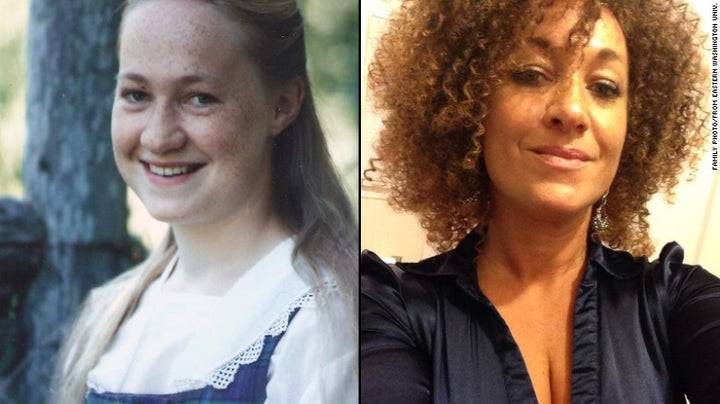
Though still in its infancy, science sheds light on transgender identities. Not so much ‘transracial’ ones.
I have been obsessed with the story of Rachel Dolezal since she was first “outed” as a white woman living as a black woman in 2015. Back then Dolezal was the executive director of the NAACP in Spokane, Washington. When a reporter asked her if she was an African American, Dolezal famously responded, after several seconds of stunned silence, by saying, “I don’t understand the question.”
As it turns out, Dolezal was raised in Montana by her biological Caucasian parents. Her childhood photos show a stark contrast between her blue-eyed, blond-haired days as a youth and the bronze-complected, kinky brown-haired woman in the interview. Dolezal’s new book, In Full Color: Finding My Place in a Black and White Word, puts her back in the spotlight once again.
As someone who studies how people think and believe, who also happens to be gay, I can see how Dolezal’s profession of “transracial” is a smack in the face to those who identify as transgender. Yet, those on the outside of the transgender issue are left to wonder, what is the difference between someone claiming to be a different race and someone claiming to be a different gender? If we accept one, why not accept the other? That’s a fair question.
Kat Blaque, a transgender black woman says, “Gender is not a biological trait passed from parent to child, whereas race is.” In other words, racial features are passed on, but gender is innate. Blaque explains that darker skin is the result of melanin, which was an evolutionary trait to protect people from the sun. Race is something that is only available to certain people. Blaque points out that Dolezal can wash off her makeup and resume life as a white woman any time she wants to, but transgender people can’t do that. They are not defined by what they are wearing because it is an innate part of who they are.
There is still much to learn about what makes up gender and sexuality, but the biology we know cannot be ignored. As I addressed in a 2015 article, Brain Sex: Gender, Sexuality and Cultural Roles, our sexuality and gender are at least partially determined by sex organs, chromosomes, gender identification, and our brains. While perception and environmental influences color the way we see the world around us, biology is a much larger part than was previously known.
For one thing, the brains of males and females are different. Scientists describe it as sexual dimorphism, or the difference in brain size and neuron densities when comparing male and female brains. In transgender people, research has shown male-to-female transgender brains are more likely to resemble female brains in size and the placement of neuron density. The reverse is true for female-to-male transgender brains.
Additionally, one twin study, which looked at transgender siblings, found that 33 percent of male and 23 percent of female identical twins were both transgender, compared to just 2.6 percent of fraternal twins. And in a genetics study, male-to female transgender people were more likely to have a longer version of a receptor gene, which reduced the gene’s ability to bind testosterone. The gene’s binding of testosterone helps form male sex characteristics.
Though still in its infancy, the science of sexuality and gender are producing results, which show a solid connection between biology and behavior. The same cannot be said for someone who declares herself “transracial.”
However, if Dolezal’s account of her childhood is true, that she was molested by her brother and made to eat her own vomit, it makes sense that she would identify with an oppressed culture, which also represents resiliency and strength.
Wendy Danbury, in a comment on social media, noted, “When I was 12 or 13, I envied the African American girls at my middle school (in mostly white Orange County, [where] there were only a very few people of color). I wished I could be part of their group, because they seemed so warm and chummy with each other. I didn’t realize at the time that I was looking at an out-group creating their own in-group; I was just drawn to the intimacy of their community.”
Sadly, much of the transgender community goes it alone when they come out. Most lose jobs because they are transgender, not get them. The Human Rights Campaign reports transgender unemployment rates at twice the rate of the rest of the population, while 44 percent are underemployed. And transgender workers are four times more likely to have household incomes of under $10,000.
The National Coalition of Anti-Violence Programs reports that transgender people were the majority of victims of hate violence homicides in 2013, are 3.7 times more likely to experience police violence against them, and 1.8 times more likely to experience sexual assault compared to the general population.
There are no benefits to declaring oneself transgender other than relieving the psychological dissonance of feeling gender dysphoria and seeking treatment to resolve the issues. The consequences of such a declaration are unpredictable, but there is no turning back. Dolezal, on the other hand, made a living as a presumed black woman working for the NAACP and teaching college classes on a topic she only tangentially knows about, after appropriating an identity that doesn’t truly belong to her.
